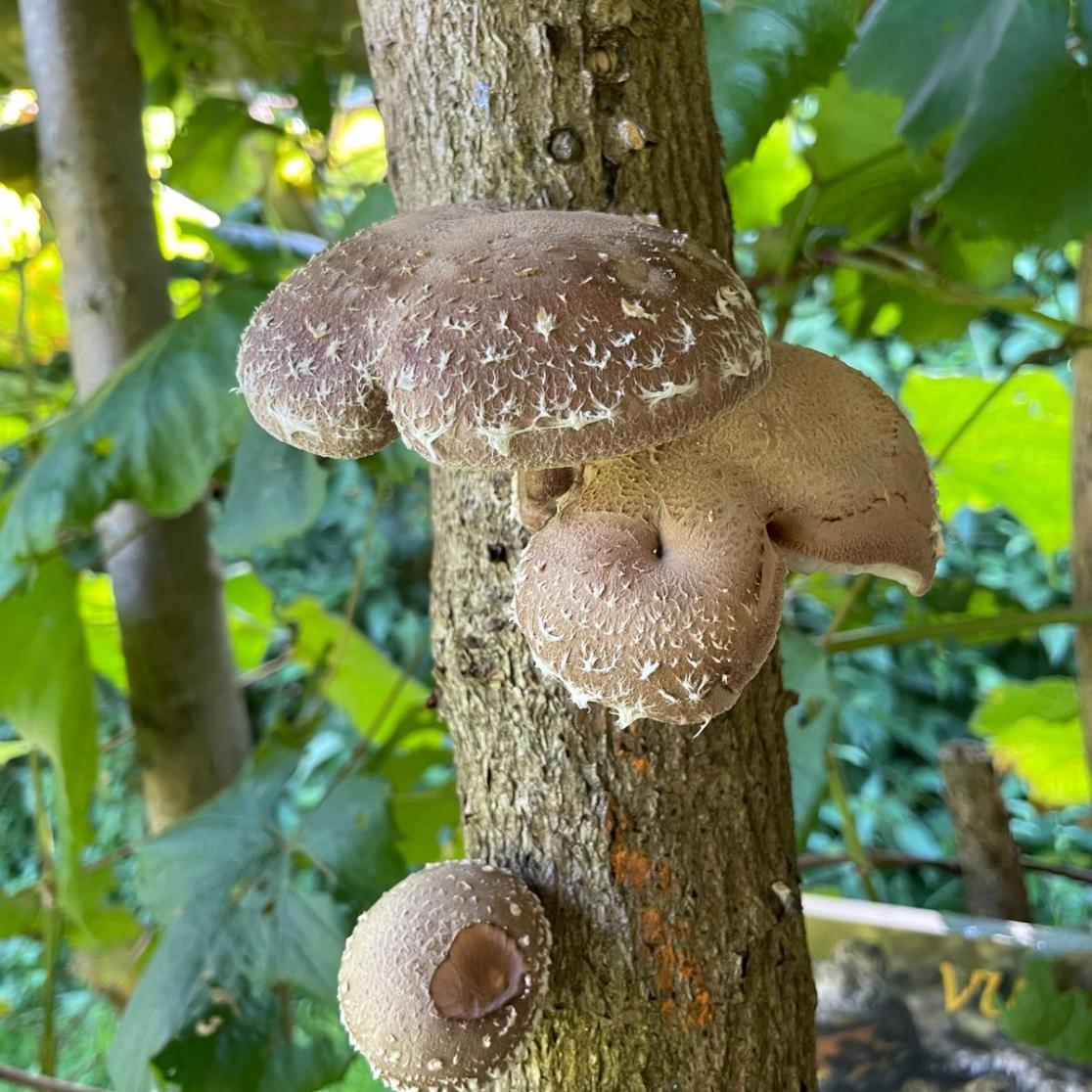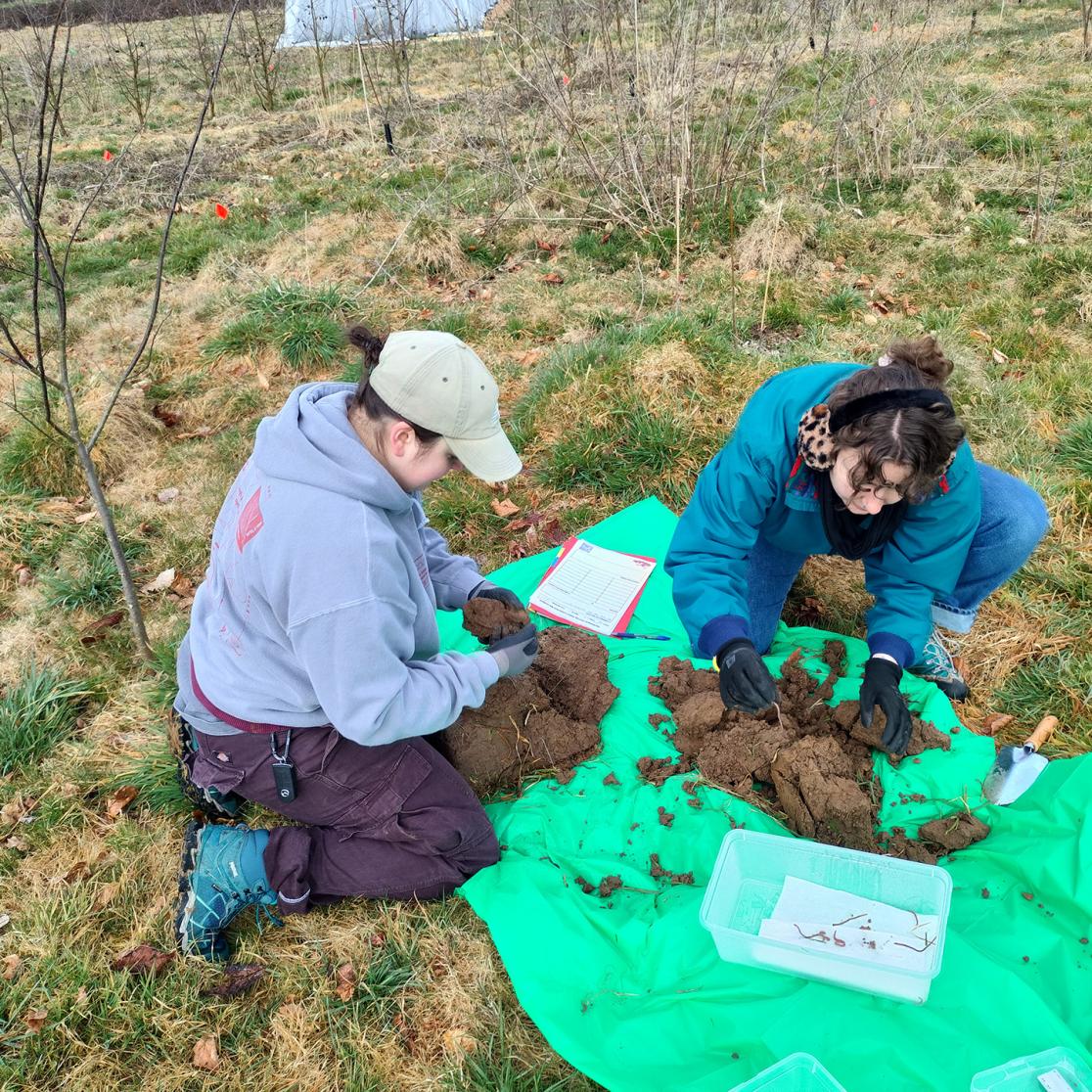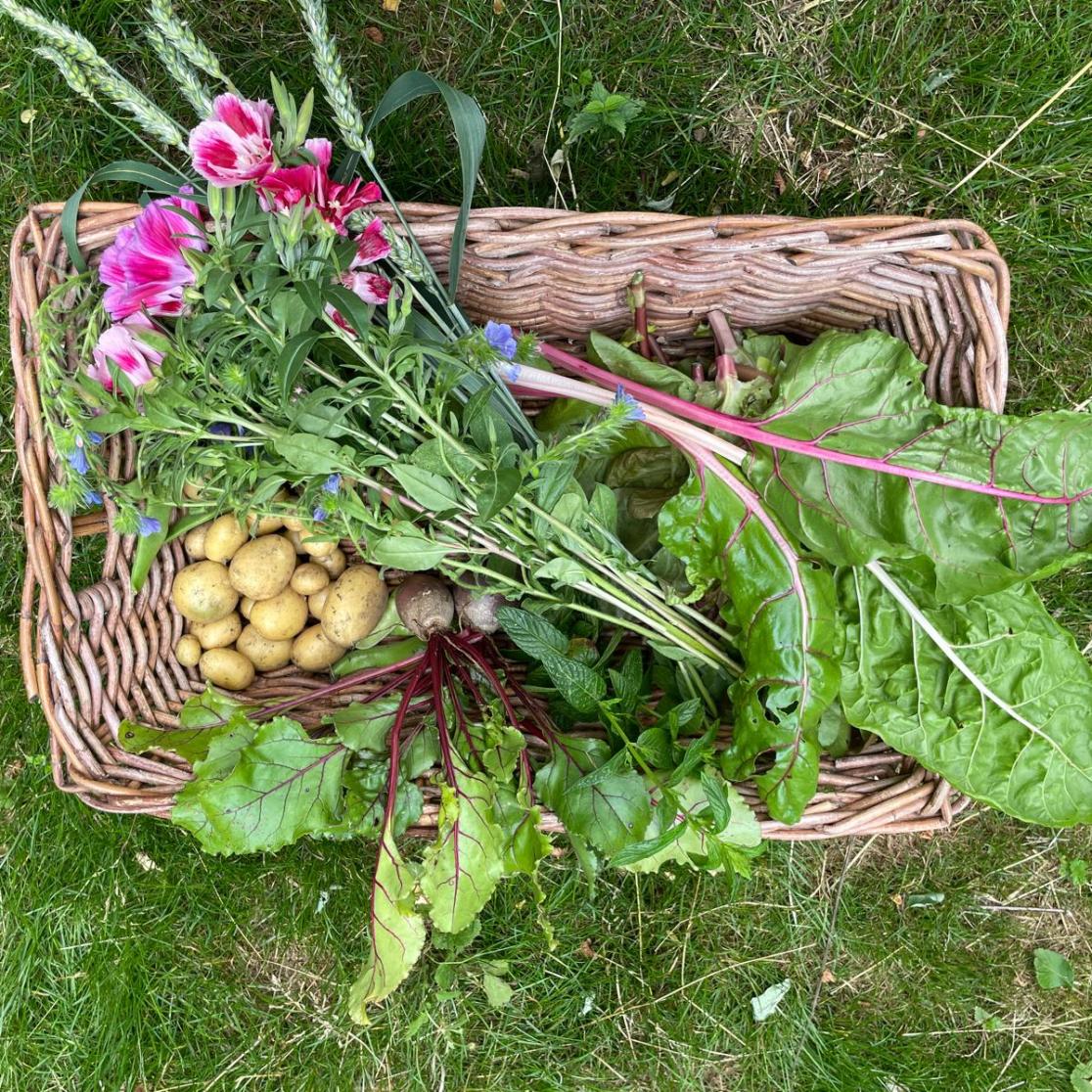Food Forests: A source of inspiration for future food supply
This story is about more than food forests, bumblebees, birdsong, and biodiversity. It shows how a shared interest in sustainability and nature makes collaboration at FSE effortless.
"Take an unused piece of land, let nature take over, and it becomes a forest. An ecosystem develops, but there is little for humans to harvest," says Aki Härmä, a researcher at the Department of Advanced Computing Sciences. Originally from Finland, a country covered in dense forests, he knows how hard it is to gather enough food. "A single family needs a huge forest to pick enough mushrooms and berries."
Keeping balance
People no longer rely solely on forests for food. Large-scale farming dominates. Even in monoculture, balance is key. "Farming requires heavy machinery, fertilisers, and chemicals to maintain that balance. A food forest, however, creates stability with much less effort while still providing food. How do you achieve that balance? And how do human activities affect forest organisms and the balance between them? That is what fascinates me," Aki says.
In Cadier en Keer, Pim Martens from System Earth Sciences and University College Venlo manages his own food forest. He explores similar questions, so collaboration with Aki was a natural step. "Food forests are still new. The oldest in the Netherlands is only 15 years old. Development is slow and based on trial and error," Pim explains. "We want to change that by gathering scientific insights that help predict how owners can optimise their forests for maximum yield."

Birdsong
In their spare time, Aki and Pim conduct research. "For two years, I have recorded bird sounds in my garden. I have collected over a million sound fragments," Aki says. "With this data, I map biodiversity; what species are present and in what numbers?" Meanwhile, Pim studies biodiversity in his food forest. "This spring, Circular Engineering students will count earthworms in different soils, comparing farmland to food forests."
Their research is expanding. In March, a BeeBar opened at the Nick Bos Greenhouse in Venlo. Nectar in this wooden structure, equipped with cameras and microphones, attracts pollinators like bees and bumblebees. "We aim to recognise individual insects and track populations. Right now, we test it in the greenhouse with a known number of bumblebees. Later, the BeeBar will monitor pollinators in food forests," Aki explains. The project is a collaboration between DACS, BFFI, UCV, and IDEE (FHML).
We aim to recognise individual insects and track populations
Aki HärmäDigital twin
The researchers are applying for major biodiversity and food forest funding. "We want to combine all available food forest data into a model that advises forest managers. This includes sensor data, field experience, and scientific literature," Aki says. Pim adds, "We also work with MACSBIO and the University of Antwerp on a 'digital twin' of vineyards in Belgium and the Netherlands to support winegrowers."
Aki and Pim see more opportunities for collaboration. Robots could help identify and harvest ripe fruit. Currently, picking in food forests and vineyards is done by hand. Pim points out a benefit: "Manual harvesting strengthens social bonds and deepens appreciation for nature."
Food forests will never be able to replace intensive farming, but there are intermediate alternatives. "Strip farming or ‘food forests light’ is a good example," Pim explains. "Different crops grow in alternating rows on a single field. This method allows traditional harvesting machines to do their work while improving biodiversity and reducing disease risks."

Cooperation
Pim plans to create a food garden at Brightlands Campus Greenport Venlo. "Students from all Venlo-based programmes can get involved."
Look closely, and you’ll see that almost every FSE research group is engaged in this work. Few studies are as inter- and transdisciplinary as research into food forests and biodiversity. Pim: "This topic connects many FSE fields and aligns with personal interests of colleagues. That makes finding partners easy." The need for research is clear. Farmers must increasingly consider nature, especially in the face of climate change. Knowledge of biodiversity-friendly farming techniques is essential. Much of that knowledge lies hidden in food forests.
